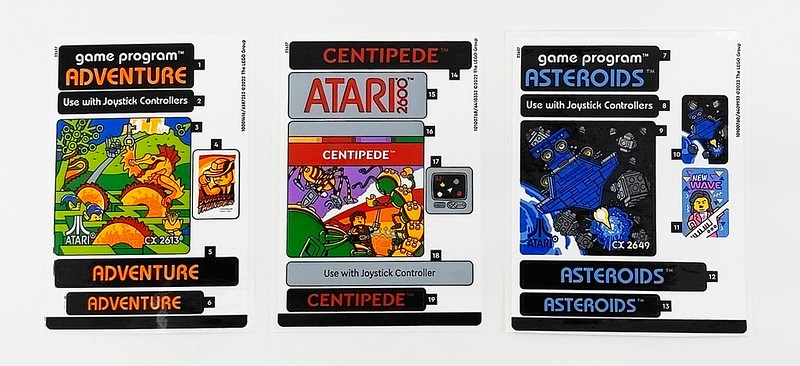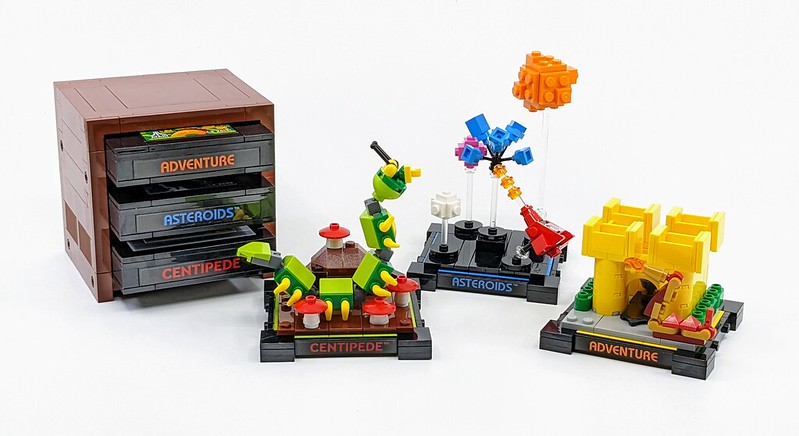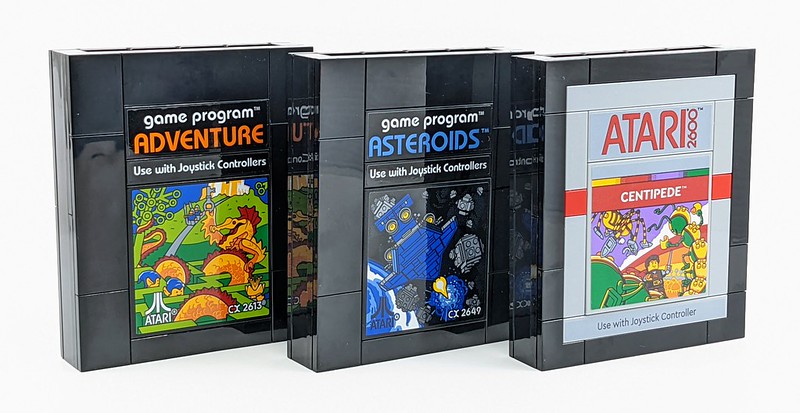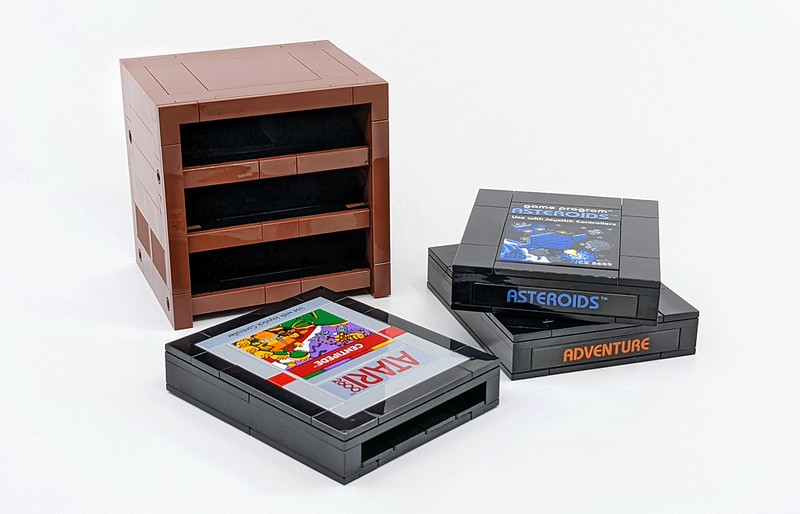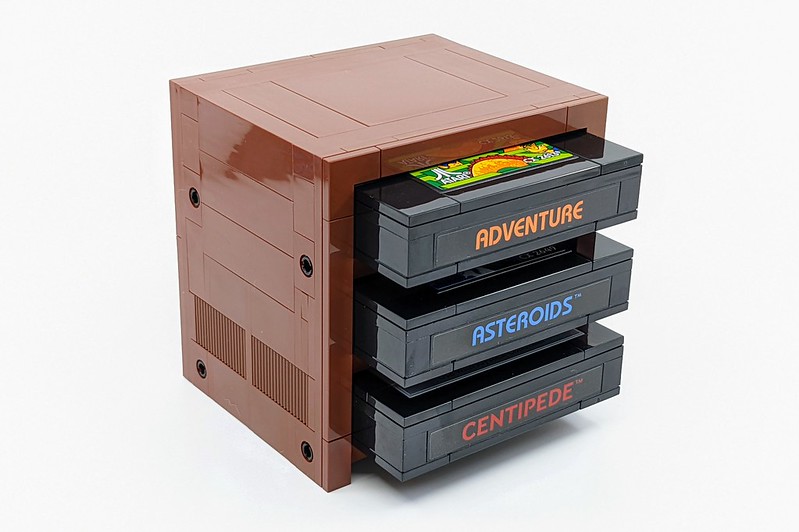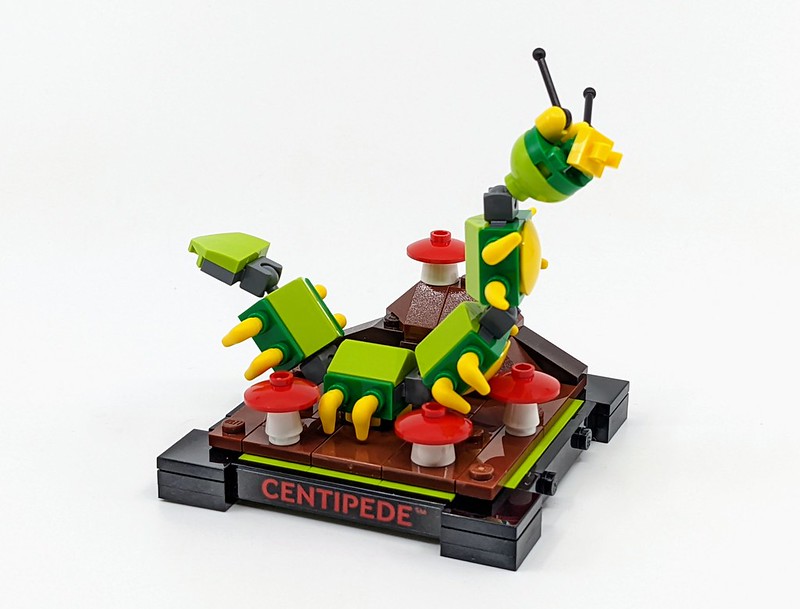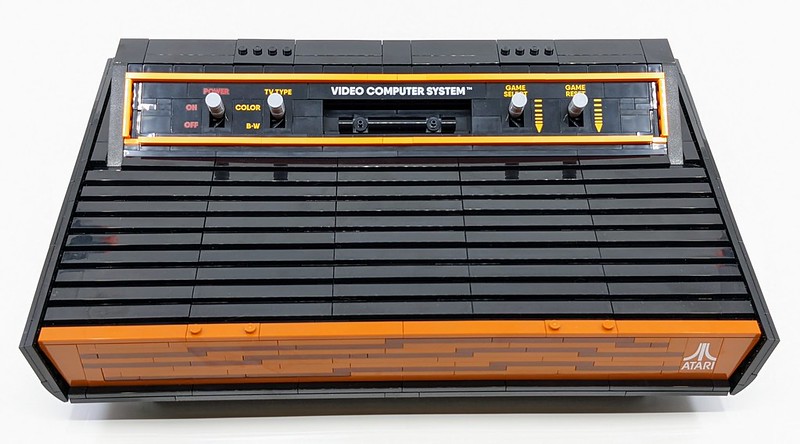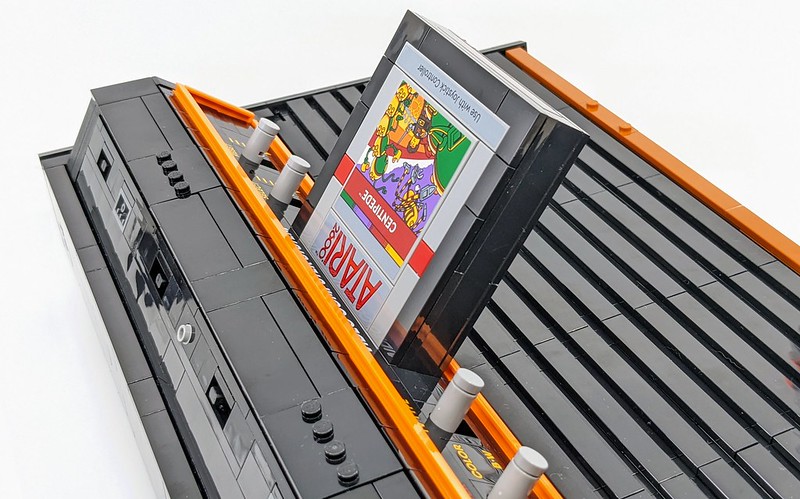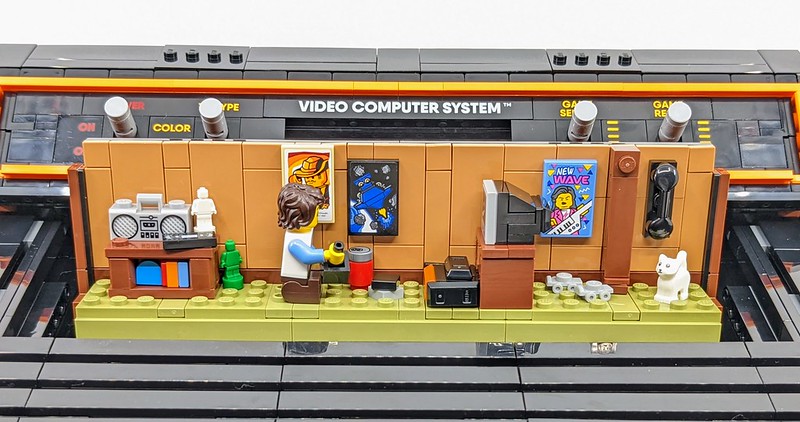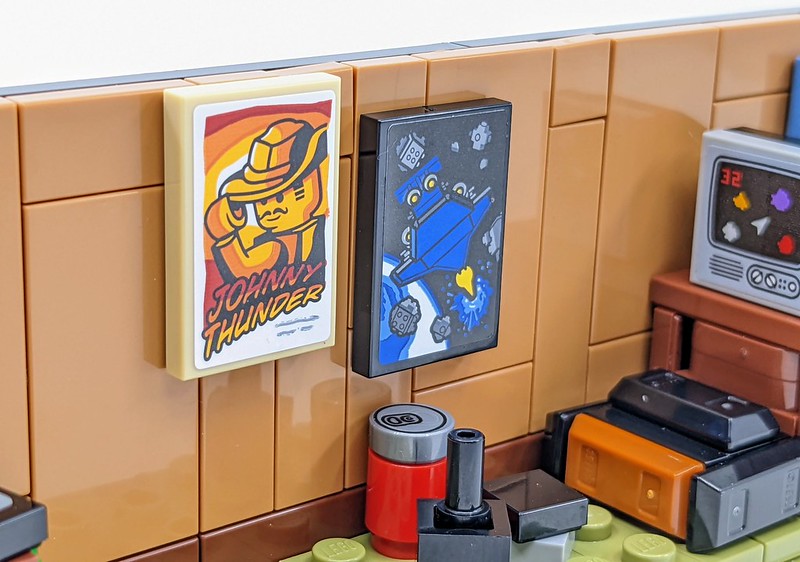Long before PlayStation, Xbox and little before Nintendo, Atari led the way in video gaming. The Atari Video Computer System, more commonly known as the 2600, brought gaming to the masses. People could enjoy arcade classics from the comfort of the sofas. Although Atari has lost its way in recent years, its place in gaming history is paramount. This year marks the 50th Anniversary of Atari and what better way to celebrate than transforming the iconic wood-panelled 2600 console into a brick-built marvel. Its aesthetics are certainly a product of its time. But have they been captured with LEGO® bricks? I’ve had the privilege to be able to build this incredible set ahead of its release on August 1st, so here’s my review of the LEGO ICONS Atari 2600 Video Computer System.
Product Details
Take a trip back to the 1980s with this LEGO® Atari® 2600 (10306) building set for adults. Enjoy a rewarding project creating all the details of this replica console, game cartridges and joystick. Gaming fans will love the 3 mini builds depicting themes from 3 popular Atari® games. There’s even a hidden 1980s scene to build for total nostalgia overload.
Do not disturb: Game in progress
Rediscover 3 of the most popular Atari® games: Asteroids™, Adventure and Centipede™. There’s a cartridge for each, plus 3 scenes to build capturing the story of each game. The games slot into the vintage-style console and can be stored in the cartridge holder. Check out the artwork, inspired by the original Atari® designs plus a touch of LEGO spirit.
- Set Name: Atari 2600
- Set Number: 10306
- Pieces: 2532
- RRP: £209.99/$239.99/239.99€
- Number of Bags: Bags x ????
- Stickers: 3 x sheets
- Minifigures: Atari Gamer
- Instructions: Booklet x 1 + LEGO Building Instructions App
- Availability: LEGO Stores & LEGO Online from August 1st
Following the success of the LEGO Nintendo Entertainment System, another iconic games console will soon join it. The Atari 2600 was a unique console for its time. Games were still in their infancy and many were shipped as a single device, such as Pong. The Atari Video Computer System allowed players to enjoy masses of games each pre-loaded into its own cartridge. Forgot the vast vistas and hyper-realistic games we enjoy today. Atari games were often limited to just a few colours and pixels. But even today, those games have become legendary with titles such as Pong, Pac-Man, Space Invaders and Asteroids are looked back on with great fondness. I’ve been a gamer since the 80s and the first console I ever played was the Atari 2600. I spent hours playing Centipede, Pac-Man, River Raid and Space Invaders. By today’s standards, Atari games were primitive but they were still fun. I also look upon the Atari 2600 with the same great fondness.
The set is the work of former fan builder and now LEGO Designer, Chris McVeigh. He has quite the aptitude for crafting retro tech with LEGO bricks. So Chris is the perfect designer to transform a wood-panelled computer system from the 1980s into a LEGO set. The instructions feature a little history about the Atari Corporation and its Atari 2600 console. As well as some of the classic games which form part of this set. There are also three sheets of stickers, which are used on the three included game cartridges. More on those later but the stickers are actually more authentic to real game carts.
There are three aspects of the build – the console, three game cartridges and three dioramas inspired by those three classic games. The build sort of weaves each of them into the experience but for the purpose of this review, I’ll focus on each part of them together. So we’ll kick things off with the game cartridges. Long before you can simply puck games out of the digital ether whilst sitting on the loo, games were delivered on physical media, for the Atari 2600, that physical format was a cartridge.
They have been perfectly recreated with LEGO bricks and are also a 1:1 recreation of the real thing. Three classic games have had their carts recreated – Adventure from 1980, Asteroids from 1981 and my personal favourite – Centipede from 1983. The graphics for each cartridge are achieved with stickers and although printed pieces are preferred for the most part, for these the stickers are 100% better, as they match the real cartridges. The graphic designer behind these stickers has excelled themselves. Each of the game’s artwork has been given a LEGO twist, the dragon on the Adventure cover is the classic LEGO dragon figure. The starship on Asteroids is the Classic Space Galaxy Explorer and there’s a minifigure battling the Centipede. The three carts can be stored in a small Cartridge Holder.
The trio of game cartridges also inspired three diorama scenes. The Adventure scene features the classic yellow castle which is shown in a very basic form in the game. It also features a tiny dragon, similar to one shown in the game’s artwork. Adventure’s biggest claim to fame is the fact it featured the first-ever Easter Egg to be featured in a game. This is represented by a tiny egg, hidden behind the castle.
The Asteroids diorama has also been inspired by the game’s artwork. If it was a representation of the actual game graphics, it would be a rather boring diorama. The scene includes a little starship taking out a bunch of incoming space rocks. I love the way the little ship has been mounted on a minifigure display peg and the little blast shots on a transparent rod.
One of my favourite Atari games is Centipede, the sound effects instantly transport me to my early days of gaming. The diorama features a cool little centipede creature created in different sections, each clipped together. The use of bull horns for the centipede’s legs is a great touch. It’s surrounded by a group of mushrooms, which litter the screen as the centipede descends the screen.
Even though the cartridges and dioramas are a pretty substantial part of the set, the main focus is the Atari 2600 console. In a similar fashion to the Nintendo Entertainment System console, the 2600 is basically a 1:1 recreation of the unique-looking computer system. The original take of the console screamed the 80s, although the wood effect panel on the front of the console had a 70s vibe to it. That has been replicated with a mix of medium nougat and reddish brown plates, which sort of pulls off the wood grain effect. The console panel of the console sits across the top and is built separately from the main body of the set.
This features quite a lot of unique detail including four switches and a number of printed pieces to represent their functions. The two switches on the left side of the panel are free moving and show the power and tv output options. With the two on the right have elastic bands connected to them to give them a springy feel, just like the actual console. The memories of flippantly flicking the reset switch when I wasn’t doing well in a game, came flooding back when building those. The control panel also has a slot to place a cartridge in it. It doesn’t have the same flashy spring draw function as the NES, but the included carts perfectly sit in the slot. The orange which borders this section is a lot more prominent than it is on the original console, but it’s still been nicely done. A special mention goes to the use of orange and turquoise elements inside the builds. Those combined with the black elements also offer a touch of the 80s. But they aren’t the only thing found inside the console.
Within the depths of the console is something more exciting that chips and wires, with a neat little hidden surprise. The large grill-like panel which sits below the control panel can be slid forward to reveal a mini recreation of an 80s bedroom and a young gamer enjoying his own mini Atari 2600. The elongated L-shaped scene rises up as the panel is pulled forward and retreats back when closed. Once again the graphic designers have created a couple of great stickers for this part of the build. With three posters on the wall connecting to other LEGO themes, including Classic Space, the 80s rocker from the Collectible Minifigure and the legendary Johnny Thunder. The minifigure also features a unique torso, with the Atari logo printed on it.
Finally, the build is completed with the recreation of the controller or joystick to be precise. Back in the 80s there were no flashy rumbles, touch screens or even more than one button. The Atari control system took inspiration from the arcade cabinets, from which many of the console’s games first appeared. The single-stick controller has been crafted just as expertly as the console, which the same stiff movement of the stick even built into it. The joystick controller can be connected to the console, with a long piece of rubber tubing.
Review Round-up
The Atari brand may not be as prominent today as it once was but it played a key role in making gaming the cultural phenomenon it is now. Reason enough alone that it should be immortalised in LEGO form. I certainly think those of a certain age, will get more out of the build due to the nostalgia aspect of it. But even if you have no knowledge of this odd wood veneered ‘computer system’ it’s a cracking build. The details it contains are very fun, I particularly enjoyed the way the artwork on the cartridges has been given a LEGO twist. I also appreciate the build is detailed yet not complex. The shape and functional aspects of the console have been expertly captured but the way this has been achieved is uncomplicated. In basic terms, I really like this set, I enjoyed the build, I enjoyed the various Easter Eggs, and I enjoyed the memories of my early years of gaming this set triggered. It’s a fitting way to celebrate 50 years of Atari.
For
+ An incredible recreation of the iconic console
+ A fun build experience but not overly complex
+ The additional builds make the set even greater
Against
– None
Coming Soon: UKIrelandUSCanadaGermanyDenmarkAustraliaNew Zealand
This set was provided to BricksFanz by the LEGO Group for purposes of review. The thoughts within this review are that of BricksFanz and do not reflect those of the LEGO Group or Atari. Providing a set for free does not guarantee a favourable opinion of the set.








